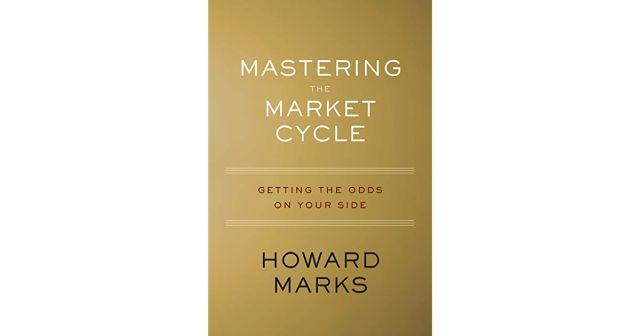
by Editor | May 25, 2021 | Business, C S R, Corporate, Investing, Large Enterprise
 Bengaluru : Bullish on its pan-India expansion, home diagnostic service provider Healthians on Friday announced a major expansion in southern cities including Bengaluru, Hyderabad and Chennai with an investment of Rs 50 crore.
Bengaluru : Bullish on its pan-India expansion, home diagnostic service provider Healthians on Friday announced a major expansion in southern cities including Bengaluru, Hyderabad and Chennai with an investment of Rs 50 crore.
The investment will be made within the next three years and Healthians also plans to add 12 pathology labs within the next 18-24 months, the company said in a statement.
“We have witnessed substantial growth in the past year in north India, and have perfected our model in multiple cities before heading for pan-India expansion. Based on our market survey and customer demand, South India is our first move for a mega expansion planned in 2019,” said Deepak Sahni, Founder and CEO of Healthians.
“Unlike traditional businesses, we don’t want to dominate just one single market and clearly see the demand from all parts of India,” he added.
The company also announced the launch of its operations in Bengaluru along with the opening of a fully automated and managed pathology lab.
As compared to the existing services available here, residents will not just get free home sample collection and free doctor and diet consultation but for the first time will also get free blood pressure and blood sugar check for family members at home.
Healthians currently has active operations in 21 cities including Delhi-NCR, Lucknow, Kanpur, Agra, Dehradun, Jaipur, Chandigarh, Jalandhar, Ludhiana, Amritsar, Sonipat, Meerut, Panipat, Ambala, Karnal, Mohali and Panchkula.
—IANS

by Editor | May 25, 2021 | Business, Investing, Opinions, Property
 By Taponeel Mukherjee,
By Taponeel Mukherjee,
As 2018 ends and we head into 2019, it would be worthwhile to s an the investment horizon and identify important strategies that investors and entrepreneurs could explore to create businesses that can benefit significantly from growth in the Indian markets.
As incomes rise steadily in India, “premiumisation” business models will gain traction among investors in the foreseeable future. The ability of businesses to create high-quality premium products and services to cater to the upper end of the market needs renewed attention. While the “premiumisation” theme has been applied in things like baby products and food, there is a need for the trend to pick up further steam.
The “premiumisation” theme applies as much to consumer businesses as to services and infrastructure providers. In largely commoditised businesses such as offices, logistics and warehousing, the ability to create a niche — as demand for high-quality assets increases — will be the driver of the “premiumisation” theme.
For example, with the economy growing, the demand for high-quality office space should see further expansion, driven primarily by the services industry. As the industry becomes more significant in size (in both absolute terms and percentage terms), one can expect additional demand for top-notch office space in the form of both buildings and office parks. The ability to deliver high-quality premium assets in land-constrained urban areas will help businesses stand out.
Additionally, business opportunities in areas such as specialised premium warehousing should gain traction. With increasing healthcare penetration and greater longevity, industries such as pharmaceuticals will demand high-quality, sophisticated warehousing and logistics infrastructure to cater to the growing demand. Infrastructure businesses that can create the necessary logistics infrastructure will be able to charge a premium for the asset in a sector that is primarily viewed as a commoditised service.
Essentially, for patient capital, long-term structural trends present opportunities to create premium assets that benefit from the changes sweeping through the Indian economy. Whether it is trends such as increased per capita healthcare expense and the greater longevity that creates opportunities in the pharmaceutical sector or patterns such as increased urbanisation, nuclear families and higher women’s work participation that creates the need for online grocery delivery, the essential point is that long-term trends will create the need for premium specialised infrastructure. Such infrastructure creation is full of investment opportunities.
The coming year and beyond also present both investors and the government opportunities to assess additional sectors such as energy storage and water, where decentralised infrastructure can have a significant role to play. While subsidies are an essential component of a policy package for accelerating the creation of infrastructure, financially viable platform structures that can help aggregate assets can be a game changer for decentralised assets that have significant demand.
It is essential to channel adequate funding towards the decentralised infrastructure sector, such as water assets or energy storage assets, to expedite infrastructure creation. For generating sufficient funding for an infrastructure asset at a rapid pace, it is vital that the infrastructure asset moves towards becoming an asset class eventually.
For instance, two themes that have received significant attention are “clean energy” and “access to clean water”. Decentralised infrastructure platforms can contribute significantly to these two aims. It is also vital to not look at decentralised infrastructure as a replacement for centralised systems, but rather as an alternative solution for specific scenarios.
There have been innovative models that are being utilised where investors are using platforms to aggregate distributed water treatment businesses catering to medium- to large-sized businesses as opposed to centralised water treatment businesses that require large-scale water transportation infrastructure to be created. Specialised industries the world over are benefitting from decentralised water solutions. The years ahead will provide opportunities for infrastructure investors to utilise investment platform-type structures to aggregate decentralised assets further. Such innovative solutions need to get a further impetus.
Most importantly, the government must also realise that decentralised infrastructure is essential to complement the larger infrastructure-creation process and hence must ensure that policies help promote the sector.
The year ahead provides an opportunity to innovate to create investment opportunities that deliver both investment returns and broader societal benefits. Strategies such as “premiumisation” and “decentralised infrastructure” will help cater to demand in a rapidly-growing consumer market through financially-viable business models.
(Taponeel Mukherjee heads Development Tracks, an infrastructure advisory firm. Views expressed are personal. He can be contacted at taponeel.mukherjee@development-tracks.com or @Taponeel on Twitter)
—IANS

by Editor | May 25, 2021 | Investing, Mutual Fund, Venture Capital
 By Rahul Agarwal,
By Rahul Agarwal,
A perfect mutual fund portfolio is one that is commensurate with ones appetite for risk and is capable of meeting ones financial goals.
An investor in the equity markets, especially through the mutual fund route, has to acknowledge that volatility is part and parcel of the markets. The focus should, therefore, be on learning how to navigate volatile markets so that one does not get off-tracked from his/her investment thesis during periods of heightened volatility — as is happening now.
The first step towards creating a mutual fund portfolio is the identification of one’s tolerance for risk as this drives the decision-making process pertaining to asset allocation and the quantum of allocation in each asset class. Once one has accurately identified individual risk tolerance, the next step is to identify financial goals; ideally, these should be clearly categorised into short-term, medium-term and long-term objectives.
The smartest way to create a goal-based portfolio is to allocate a separate portfolio for each financial goal or club similar goals based on risk profile and duration and create a common portfolio. One can club retirement and child’s higher education in one portfolio and buying a car or a future foreign trip in another portfolio.
Asset allocation strategies are dependent on the time-horizon of the financial goal. To realise short-term goals one need’s predictable cash flows and therefore, a higher component of debt instruments is necessary.
For medium-term goals the portfolio should have a healthy mix of both equity and debt and for longer-term goals the portfolio should have a higher component of equity to be able to beat inflation.
After one has zeroed in on the asset allocation for all the goals, the next step is to pick the right kind of mutual fund category that is capable of meeting a particular financial goal.
Once the required mutual fund categories have been identified, the next step is to choose the right schemes within a particular category. The selection criterion should hinge on the investment objective and consistency of returns that a mutual fund has been able to deliver.
Efforts should be made to pick funds with larger assets under management and reputed brand names with a better track record of delivery. Total expense ratio is another important criterion: A fund with lower expense ratio is always better than funds with a higher expense ratio, other things being the same.
Based on one’s financial goals he/she would need to invest in both equity and debt mutual funds and would also have to pick several mutual fund schemes. However, it should be remembered that finalising the portfolio with too many funds is a bad idea as beyond a certain limit — for example, a maximum six to eight schemes; there is no benefit of over-diversifying. Over-diversification leads to lower returns and monitoring and re-balancing becomes tedious for an investor.
Finally, building a perfect portfolio is always based on suitable asset allocation that is derived from one’s risk appetite and investment horizon. The perfect way of investment over the long term is continuous asset allocation focused on goal-based portfolio creation. Each goal should be precise, defined in quantitative terms and duration.
(Rahul Agarwal is Director, Wealth Discovery/EZ Wealth advisory. The views expessed are personal. He can be reached at rahul@wealthdiscovery.in )
—IANS

by Editor | May 25, 2021 | Books
 By Ravi Dutta Mishra,
By Ravi Dutta Mishra,
Book: Mastering the Market Cycle; Author: Howard Marks, Publisher: Hachette India; Pages: 315; Price: Rs 699
In his new book “Mastering the market cycle”, Howard Marks, one of the most successful investment managers, attempts to explain what makes and breaks the market and why economics and business never move in a straight line.
Mark’s client memos are widely read by professionals in the field. He previously wrote “The Most Important Thing”, published in 2011, consisting of 20 investment insights.
In “Mastering the Market Cycle”, he focuses on investor behavior which, according to him, is the key to understanding the highs and lows of a market cycle.
One of the main points Marks asserts is that despite financial facts and figures being the basis of how markets move, this is “only a starting point”.
“People’s decisions have great influence on economics, businesses and market cycles. In fact, economics markets consist of nothing but transactions between people. And people don’t make their decisions scientifically.”
Marks compares investors to electrons on another occasion, borrowing from physicist Richard Feynman’s observation: “Imagine how much harder physics would be if electrons had feelings!”
“That is if electrons had feelings, they couldn’t be counted on to always do what science expects of them, so the rules of physics would work only some of the time,” says the author.
Investors are portrayed as “economic men” but when it comes to taking a decision, Marks says the market spends little of its time calmly weighing financial data and setting prices free of emotionality.
He uses the adage, “markets fluctuate between greed and fear,” to explain that the fundamental reason behind the fluctuation is because people oscillate between greed and fear. This theme of deciphering investors behavior runs across the book and is the heart of how he explains the market cycle.
Based on his memos and experiences over the years, Mark’s book has a great deal to offer for investors and market enthusiast from around the globe. The back cover carries a compliment from Warren Buffet: “When I see memos from Howard Marks … I always learn something.”
Investment, Marks says, is like the choosing of a lottery winner. Both are determined by a ticket being pulled from a bowlful of tickets. The superior investors according to the author, are people who have a better sense of which tickets are in the bowl, or whether it’s worth participating in the lottery.
Howard’s book is not just for the people who understand trading or for experts who deal with market cycles. It can be enjoyed with a fundamental understanding of economics and business but could have been better with fewer repetitions.
However, to single out a niche audience for whom “Mastering the Market Cycle” is a must read are people interested in behavioral finance.
The book may inspire an Indian expert to explain the market cycles taking the readers through the Dalal Street and the 1991 balance of payment crisis in India than Wall Street and the 2008 financial crisis that originated in the US, as Marks says in this book.
(Ravi Dutta Mishra can be rached at ravi.m@ians.in)
—IANS

by Editor | May 25, 2021 | Commodities, Commodities News, Corporate, Corporate Governance, Investing
 By Bappaditya Chatterjee,
By Bappaditya Chatterjee,
Bhubaneswar/Kolkata : Buoyed by increasing domestic demand on the back of infrastructural development, state-run National Aluminium Company Ltd (Nalco) plans to embark upon a Rs 25,000 crore brownfield and Rs 20,000 crore greenfield expansion in the next few years, its Chairman and Managing Director T.K. Chand said, adding this should eventually improve the bottomline by Rs 1,100 crore.
The Navratna public sector undertaking (PSU), under the Union Ministry of Mines, had substantially increased its turnover and net profit in the last year and is looking at a sharp growth in both its topline and bottomline by end of the current financial year.
“We are expecting topline (revenue) to be somewhere between Rs 11,500 crore and Rs 12,000 crore by end of this current fiscal, clocking over 25 per cent growth over last year. Similarly, our net profit is likely to touch Rs 1,800 crore by the end of this fiscal, up by about 35 per cent from a bottomline of Rs 1,342 crore in the last year,” Chand told IANS in an interview.
The company has clocked about Rs 6,014 crore in revenue from operations and Rs 1,197 crore of net profit in the first half of the current fiscal despite volatility in alumina and aluminium markets amidst a US-China trade war and challenges in availability of coal to meet its energy needs, he added.
Chand said focusing on cost reduction for specific consumptions of high-value raw materials like caustic soda, coal, petro-coke and others, along with an emphasis on lowering energy consumption and ramping up production, have been paying a dividend to the metal maker.
It switched over to spot sales of alumina, instead of making long-term contracts, which gave it a better realisation, he said.
“We have planned around Rs 25,000 crore of brownfield expansions, which include additional one million tonne alumina refinery capacity, increasing of the smelter’s capacity by five lakh tonnes at Angul and ramping up of CPP (captive power plants) by addition of two units of 660 MW each. All these will be completed between 2019 and 2021,” he said.
These expansions are expected to take its aluminium production from existing 4.4 lakh tonnes to one million tonnes and also help it to register revenue of Rs 18,000 crore, he said, adding that “in the second phase, we will take up the Rs 20,000 crore greenfield expansions by adding another smelter and captive power plants”.
Speaking on challenges related to availability of coal for its captive power plants, he said there were shortages of fossil fuel and the aluminium maker sourced electricity from the state grid to run its plants. “We hope, during the winter season, the coal supply is steady.”
The Utkal-D and E coal blocks were allotted to the company in the year 2016. Mine opening activities for Utkal-D are expected to start in second half of 2019-20.
“Opening of the new coal block by middle of next year and producing about two million tonnes of coal annually, instead of buying it from Coal India, will translate into savings of Rs 560 crore. Moreover, a new alumina refinery with additional one million tonne capacity, which will be commissioned in 2021, will also add a net profit of Rs 350 crore. We are also putting two wire rod mills which will add Rs 120 crore to the profit in future,” he told IANS.
The 2.7 lakh tonnes per annum (tpa) caustic soda project in a joint venture with Gujarat Alkalies and Chemicals Ltd. (GACL) at Dehej is in an “advanced stage” and is schedule to befin operating from next year and this would potentially add to “net profit by around Rs 80 crore”, he said.
The alumina and aluminium market is fiercely competitive and a long-term strategy is essential to face the uncertain price fluctuations, changing regulations and policies, he said.
Chand said the company is in the process of setting up the Angul Aluminium park in a joint venture with Odisha industrial Infrastructure Development Corporation to promote downstream industries and is also preparing a detailed project report (DPR) for establishing aluminium downstream projects for which land had already been identified.
“We are also looking to add high-end aluminium products in our portfolio which will give us better realisation. NALCO has signed a MoU with Mishra Dhatu Nigam Ltd. for establishment of a plant for making metal for defence, aerospace, automobile sectors,” Chand added.
(Bappaditya Chaterjee’s visit to Bhubaneswar was at the invitation of the Odisha government. He can be reached at bappaditya.c@ians.in)
—IANS

 Bengaluru : Bullish on its pan-India expansion, home diagnostic service provider Healthians on Friday announced a major expansion in southern cities including Bengaluru, Hyderabad and Chennai with an investment of Rs 50 crore.
Bengaluru : Bullish on its pan-India expansion, home diagnostic service provider Healthians on Friday announced a major expansion in southern cities including Bengaluru, Hyderabad and Chennai with an investment of Rs 50 crore.



